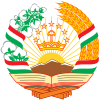
Tajikistan, officially the Republic of Tajikistan, is a landlocked country in Central Asia. It has an area of 142,326 km2 (54,952 sq mi) and an estimated population of 9,750,065 people. Dushanbe is the country's capital and largest city. It is bordered by Afghanistan to the south, Uzbekistan to the west, Kyrgyzstan to the north, and China to the east. It is separated narrowly from Pakistan by Afghanistan's Wakhan Corridor. Tajiks form the ethnic majority in the country, and the historical Tajik homeland lies in present-day Tajikistan as well as parts of Afghanistan and Uzbekistan.
The politics of Tajikistan takes place in a framework of a presidential republic, whereby the President is both head of state and head of government, and of a multi-party system. Legislative power is vested in both the executive branch and the two chambers of parliament.

The economy of Tajikistan is dependent upon agriculture and services. Since independence, Tajikistan has gradually followed the path of transition economy, reforming its economic policies. With foreign revenue precariously dependent upon exports of cotton and aluminium, the economy is highly vulnerable to external shocks. Tajikistan's economy also incorporates a massive black market, primarily focused on the drug trade with Afghanistan. Heroin trafficking in Tajikistan is estimated to be equivalent to 30-50% of national GDP as of 2012.

The Armed Forces of the Republic of Tajikistan, also known as the Tajik National Army is the national military of the Republic of Tajikistan. It consists of Ground Forces, Mobile Forces, and the Air Force, with closely affiliated forces including the national guard, border and internal troops.

Emomali Rahmon is a Tajik politician who has been serving as 3rd President of Tajikistan since 16 November 1994. Previously he was the Chairman of the Supreme Assembly of Tajikistan, as the de facto head of state from 20 November 1992 to 16 November 1994. Since 18 March 1998, he has also served as the leader of the People's Democratic Party of Tajikistan, which dominates the Parliament of Tajikistan. On 30 September 1999, he was elected vice-president of the UN General Assembly for a one-year term.

Sunni Islam is, by far, the most widely practiced religion in Tajikistan. Sunni Islam of the Hanafi school is the recognized religious tradition of Tajikistan since 2009. According to a 2009 U.S. State Department release, the population of Tajikistan is 98% Muslim,, with some Sufi orders.
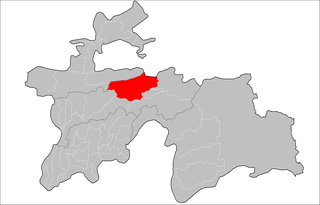
Rasht District is a district in Tajikistan, one of the Districts of Republican Subordination. It lies between the city of Vahdat in the west and Lakhsh District in the east; its southern neighbors are Nurobod, Sangvor, and Tojikobod districts; its northern border runs along the eastern finger of Sughd Region and along the international border with Kyrgyzstan. Its capital is the town Gharm. The population of Rasht District are known as Gharmis. The population of the district is 127,400.

Rudaki District is a district in Tajikistan, one of the Districts of Republican Subordination. It stretches south from Dushanbe, bordering on Shahrinav District, the city of Hisor, and Varzob District from the north and northwest, Tajikistan's Khatlon Region from the south and the east, and Uzbekistan from the west. Its administrative capital is Somoniyon, a southern suburb of Dushanbe, called Leninsky in the Soviet period. The population of the district is 518,200.
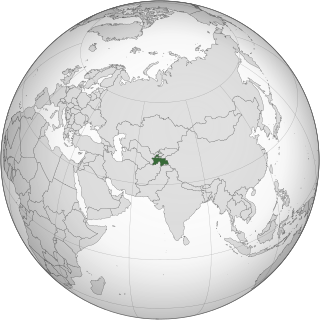
Lesbian, gay, bisexual, and transgender (LGBT) people in Tajikistan face legal challenges not experienced by non-LGBT residents. Both male and female same-sex sexual activity are legal in Tajikistan, but same-sex couples and households headed by same-sex couples are not eligible for the same legal protections available to heterosexual married couples.
Internet in Tajikistan became present within the country during the early 1990s. Tajikistan had just become independent in 1992, with Emomali Rahmon as the new ruler, when the internet was introduced to the country. Nevertheless, it was after over a decade that the country’s internet became more accessible. The history of the internet’s foundation in Tajikistan extends from 1992 to present-day Tajikistan. By 2009, internet penetration had developed since the initial conception of the internet in Tajikistan and Internet Service Providers (ISPs) had increased in number. In terms of the ISPs, Tajikistan primarily relied upon satellite-based connections using Discovery Global Networks.

Women in Kazakhstan are women who live in or are from Kazakhstan. Their position in society has been and is influenced by a variety of factors, including local traditions and customs, decades of Soviet regime, rapid social and economic changes and instability after independence, and new emerging Western values.

Women in Kyrgyzstan traditionally had assigned roles, although only the religious elite sequestered women as was done in other Muslim societies. Rural inhabitants continue the traditional Siberian tribal practice of bride kidnapping. Bride kidnapping, known as ala kachuu, girls as young as 12 years old are kidnapped for forced marriage, by being captured and carried away by groups of men or even relatives who, through violence or deception, take the girl to the abductor's family who forces and coerces the young woman to accept the illegal marriage. In most cases, the young woman is raped immediately in the name of marriag

The Tajikistan health system is influenced by the former Soviet legacy. It is ranked as the poorest country within the WHO European region, including the lowest total health expenditure per capita. Tajikistan is ranked 129th as Human Development Index of 188 countries, with an Index of 0.627 in 2016. In 2016, the SDG Index value was 56. In Tajikistan health indicators such as infant and maternal mortality rates are among the highest of the former Soviet republics. In the post-Soviet era, life expectancy has decreased because of poor nutrition, polluted water supplies, and increased incidence of cholera, malaria, tuberculosis, and typhoid. Because the health care system has deteriorated badly and receives insufficient funding and because sanitation and water supply systems are in declining condition, Tajikistan has a high risk of epidemic disease.
Domestic violence in Tajikistan is very high, due to traditional Tajik muslim family values, as well as a reluctance by the authorities to intervene in what is viewed in Tajikistan as a "private family matter".

Violence against women in Guatemala reached severe levels during the long-running Guatemalan Civil War (1960-1996), and the continuing impact of that conflict has contributed to the present high levels of violence against women in that nation. During the armed conflict, rape was used as a weapon of war.

Women in Bulgaria refers to women who live in and are from Bulgaria. Women's position in Bulgarian society has been influenced by a variety of cultures and ideologies, including the Byzantine and Ottoman cultures, Eastern Orthodox Christianity, communist ideology, and contemporary globalized Western values.
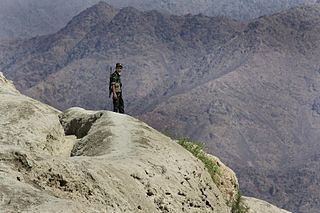
The Border Troops, also called the Border Service, is the border guard of Tajikistan. Functioning under the State Committee for National Security as part of the Armed Forces, the border guards are trained by the Organization for Security and Co-operation in Europe, along with the Afghan Border Police. A higher education college is located in the capital, Dushanbe, the Border Troops Academy, and a Border Troops Training Centre is located south of it, in the Rudaki District. The main control station of the border troops is the Border Management Center of the Main Border Guard Directorate of the SCNS.
Alex Sodiqov, born as Alexander Sodiqov is a political science PhD student at the University of Toronto, who was apprehended by security officials in Tajikistan on June 16, 2014 and charged with treason and espionage.
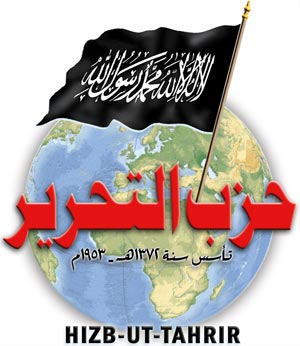
Hizb ut-Tahrir is a pan-Islamist and fundamentalist group seeking to re-establish "the Islamic Khilafah (Caliphate)" as an Islamic "superstate" where Muslim-majority countries are unified and ruled under Islamic Shariah law, and which eventually expands globally to include non-Muslim states. In Central Asia, the party has expanded since the breakup of the Soviet Union in the early 1990s from a small group to "one of the most powerful organizations" operating in Central Asia. The region itself has been called "the primary battleground" for the party. Uzbekistan is "the hub" of Hizb ut-Tahrir's activities in Central Asia, while its "headquarters" is now reportedly in Kyrgyzstan.
Since their independence in 1991 from the Soviet Union, and suffering through a civil war that lasted from 1992 to 1997, Tajikistan has had a difficult time recovering economically and structurally. This economic strain has affected the family dynamic. It is now common for the men to work abroad in Russia, leaving the women to manage the land and children. Up to 74% of the population live in rural areas and rely heavily on agriculture. These women take on the duties of their husbands and or family members, along with their responsibilities as caretakersf. In some cases the men do not return to their homes and or ask for a divorce, leaving their wife and children in a vulnerable position. Tajikistan's culture is deeply patriarchal, with women not attaining the same rights as men. Domestic violence has been a prevalent issue in Tajikistan. Lack of education, resources, cultural norms, and government enforcement, have been factors in women not reporting these crimes. Another issue is the landscape of Tajikistan: 93% of the region is mountainous. The poor infrastructure and isolated villages is a contribution in the difficulty of changing the ideas surrounding genders. The Tajikistan government, with help through partnerships with organizations like the United Nations and other Non Governmental Organizations have drafted several resolutions throughout the years to ameliorate these issues within their society. However, this issue still needs to be researched more deeply.



















